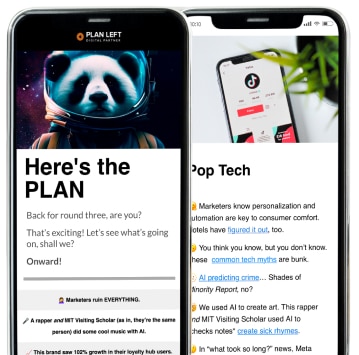
Voice search is quickly becoming a critical aspect of search engine optimization (SEO) as the use of voice assistants like Siri and Alexa continues to rise. With more and more people relying on voice search to find information, it is increasingly important for businesses to optimize their websites for this type of search. This article will provide strategies for optimizing your website for voice search, including the use of long-tail keywords, structured data, and natural language, as well as tips for improving the mobile-friendliness of your site and making your content more easily accessible to voice assistants. By implementing these techniques, you can improve your chances of appearing in voice search results and reaching a wider audience.
Use of Long-Tail Keywords
Long-tail keywords are phrases or sentences that are longer and more specific than traditional search keywords. Unlike short, generic keywords, which tend to be highly competitive, long-tail keywords are less competitive and often provide a better user experience. They are usually more specific and conversational, reflecting the way that people speak when they conduct voice searches.
The rise of voice search has changed the way people conduct online searches, with voice queries tending to be longer and more conversational than typed searches. This means that including long-tail keywords in your content can help optimize your website for voice search and increase your chances of appearing in voice search results. When used correctly, long-tail keywords can help your content better match the intent of voice search users, leading to a better user experience and potentially higher conversion rates.
Incorporating long-tail keywords into your content is relatively simple, but it does require some research and strategy. Start by identifying the keywords and phrases that are most relevant to your business and your target audience. Then, incorporate these keywords into your content in a natural and organic way, making sure not to stuff your content with too many keywords or use them in a way that detracts from the overall quality of your content.
One effective strategy is to include long-tail keywords in your blog posts and other written content, as well as in your product descriptions and other metadata. You can also use long-tail keywords in your headings, subheadings, and alt tags, making sure to keep your content concise and easy to read. Additionally, you can use long-tail keywords in your page titles and descriptions, which are important for both voice search optimization and traditional search engine optimization.
Structured Data
Structured data is a method of organizing information on a website in a way that makes it easier for search engines to understand and categorize the content. It uses a standardized format, such as schema markup, to provide information about the content on a page, including its type, purpose, and other relevant details.
Structured data plays a critical role in voice search optimization because it helps search engines better understand the content on your website. When search engines have a clear understanding of your content, they are more likely to display your website in voice search results, giving you a competitive advantage and increasing your visibility to potential customers.
Additionally, structured data can help improve the user experience by providing more relevant and accurate results to voice search users. This is especially important for voice search, as users typically expect to receive quick and precise answers to their queries. By using structured data, you can ensure that your website provides the information that users are looking for and helps them find what they need more quickly and efficiently.
Implementing structured data on your website is a straightforward process that can be accomplished using schema markup. Schema markup is a standardized format that you can use to add structured data to your website.
To start, you will need to identify the type of content you want to markup, such as a product, recipe, or event. Then, you will need to choose the appropriate schema markup for your content and add it to your website using the appropriate coding language, such as HTML.
It is also important to test your structured data to ensure that it is correctly implemented and providing the information you intended. There are several online tools available that can help you validate your structured data and ensure that it is working properly.
Video Optimization for Featured Snippets
Optimizing for featured snippets is an important aspect of voice search optimization. Featured snippets are a type of result that appears at the top of the search results page, providing a brief summary of an answer to a user’s query. This snippet is then often read out loud by voice assistants, making it a valuable target for optimization.
A well-optimized featured snippet can help improve the visibility and credibility of your website, increasing the chances of users clicking through to your site. It can also help improve the overall user experience, providing a quick and accurate answer to their query.
So, how can you optimize your content for featured snippets? Here are a few tips:
- Identify the questions that your target audience is asking: Use keyword research tools to identify the questions that your target audience is asking and the topics they are searching for.
- Create comprehensive and informative content: The content on your website should provide comprehensive and accurate answers to the questions you’ve identified. Make sure your content is well-organized, easy to read, and includes relevant information and data.
- Use header tags: Header tags (e.g. H1, H2, H3) can help break up your content and make it easier to scan. They also provide context for search engines, helping them understand the structure of your content.
- Use lists and bullet points: Use lists and bullet points to make your content more visually appealing and easier to read. They can also help improve the chances of your content appearing in a featured snippet.
- Provide clear and concise answers: Featured snippets are designed to provide a quick answer to a user’s query, so make sure your content provides clear and concise answers that are easy to understand.
- Use images and videos: Images and videos can help make your content more engaging and appealing. They can also help improve the chances of your content appearing in a featured snippet, as some voice assistants are able to read out the alt tags of images.
By creating comprehensive and informative content, using header tags, lists and bullet points, providing clear and concise answers, and using images and videos, you can improve your chances of appearing in featured snippets.
Use of Natural Language
Using natural language in content refers to writing in a way that is conversational, straightforward, and easy to understand. Unlike traditional search queries, which tend to be brief and straightforward, voice search queries tend to be longer and more conversational in nature. As a result, it’s important to use natural language in your content so that it is optimized for voice search.
The use of natural language in content is important for voice search optimization because voice assistants like Siri and Alexa respond to voice search queries that are phrased in a conversational style. If your content is written in a more formal, technical tone, it may not be picked up by voice assistants and you may miss out on the opportunity to be included in voice search results.
Here are some tips for using natural language in content for voice search optimization:
- Use a conversational tone: Write in a tone that is easy to understand and that sounds like a conversation between two people.
- Use everyday language: Avoid using technical jargon or overly formal language and instead use words that are commonly used in everyday conversation.
- Write in short sentences: Write in short, simple sentences that are easy to understand.
- Use active voice: Use the active voice, where the subject of the sentence performs the action, instead of the passive voice. This makes the content more concise and easier to understand.
- Avoid complex sentence structures: Avoid using complex sentence structures, such as run-on sentences or long chains of dependent clauses, as these can be difficult for voice assistants to understand.
By using natural language in your content, you can ensure that it is optimized for voice search and that your website is more likely to appear in voice search results. So, write in a way that is conversational, straightforward, and easy to understand, and you will be well on your way to optimizing your website for voice search.
Question Words
Question words, such as “how,” “what,” “where,” “when,” and “why,” are often used in voice search queries. By including these question words in your content, you can help improve your website’s chances of appearing in voice search results. For example, if someone is looking for information on “what is the best sushi restaurant near me,” they might ask their voice assistant, “Where can I find the best sushi restaurant near me?” By including relevant question words in your content, you can help match your website to the user’s search query and increase your chances of appearing in the voice search results.
Incorporating question words into your content is important for voice search optimization because it helps your website better match the conversational nature of voice search queries. Voice search queries tend to be more conversational than typed search queries and often take the form of questions. By including question words in your content, you can increase the chances of your website appearing in voice search results for relevant queries.
Here are some tips for incorporating question words into your content:
- Use question words in your page titles and headers. This can help signal to search engines that your content is relevant to voice search queries.
- Create content that answers common questions in your industry. This can help you attract visitors who are using voice search to find answers to specific questions.
- Use question words in your meta descriptions. This can help attract more clicks to your website from voice search results.
- Use question words in your blog post titles and headings. This can help improve your website’s chances of appearing in voice search results for relevant queries.
- Use question words in your website’s FAQ section. This can help you attract visitors who are using voice search to find answers to common questions.
By incorporating question words into your content, you can help your website match the conversational nature of voice search queries and improve your chances of appearing in voice search results. It’s important to keep in mind that the goal of voice search optimization is to provide a great user experience, so it’s essential to use question words in a way that adds value to your content and makes it easier for users to find the information they are looking for.
Video Transcripts
Video transcripts are a written record of the audio and visual content within a video. They are important for voice search optimization because they make video content more accessible to search engines and voice assistants.
When a video is posted online, it is not always possible for search engines to understand its content without additional information. This is where video transcripts come in. By providing a transcript of the audio content, search engines are able to better understand what the video is about, and in turn, this information is used to improve search results.
In the context of voice search optimization, video transcripts are particularly important because they allow voice assistants to understand and play back the content of a video. This makes video content more accessible to users who are using voice search to find information online.
In order to provide video transcripts, there are a few steps you can take:
- Transcribe the video: You can use a transcription service or do it manually to create a written record of the audio content.
- Add the transcript to your website: You can add the transcript to the same web page as the video or create a separate page for it.
- Include relevant keywords: When transcribing the video, be sure to include relevant keywords that people might use in voice search queries.
- Use HTML tags: To make the transcript more accessible to search engines, you can use HTML tags such as heading tags and alt tags.
- Make the transcript easy to read: Use a clear and concise writing style and consider including bullet points and numbered lists to make the transcript more easily digestible.
Here are some popular video transcription service providers and why they are good:
- Rev: Known for fast turnaround time and accurate transcripts, Rev also offers subtitles, captions, and foreign language subtitles.
- Temi: Offers automatic transcription with a clean and accurate format, and an easy-to-use interface for editing.
- Trint: AI-powered with a simple drag-and-drop interface, Trint helps users transcribe, edit and share their audio or video content.
- Scribie: Offers affordable transcription services with quick turnaround time, and the option to choose between human or automatic transcription.
- Happy Scribe: AI-powered and offers quick and accurate transcription, with the ability to transcribe multiple languages.
- These providers are considered good due to their accuracy, affordability, fast turnaround time, and user-friendly interfaces.
By providing video transcripts, you can improve the accessibility and searchability of your video content. This can help you to rank higher in voice search results and attract more visitors to your website. Whether you are creating a tutorial, a product demo, or any other type of video content, adding a transcript can be a simple and effective way to optimize for voice search.
Conversational Tone
Writing in a conversational tone is a key aspect of voice search optimization. The rise of voice assistants like Siri and Alexa has led to an increase in voice searches, and these searches are often phrased in a more conversational style. As such, it is important to write in a conversational tone in order to improve your chances of appearing in voice search results.
A conversational tone is a writing style that mimics the way people speak. It is friendly, informal, and often includes contractions and conversational phrases like “let’s” or “you know.” Writing in a conversational tone is important for voice search optimization because voice searches tend to be phrased in a more conversational style.
When writing in a conversational tone, it is important to keep in mind your target audience. Your writing should be geared towards your audience’s interests and needs, and it should be easy for them to understand. You can also use humor, if appropriate, to engage your audience and make your content more interesting.
In order to write in a conversational tone, you should avoid using technical jargon and overly formal language. Instead, use simple language and sentence structures, and write as if you are speaking directly to your reader. You can also use storytelling techniques to make your content more engaging and memorable.
It is also important to consider the context of the content you are writing. If you are writing about a technical topic, for example, you may need to use more technical language. However, if you are writing about a topic that is more general in nature, you can use a more conversational tone.
By writing in a conversational style, you can make your content more accessible and appealing to your target audience, and you can improve your chances of appearing in voice search results. So, when writing your content, be sure to adopt a conversational tone and engage your audience in a friendly and informal manner.
Use of Bullet Points and Numbered Lists
Bullet points and numbered lists are formats used to present information in an organized and easily readable manner. Bullet points use symbols or small dots to list items, while numbered lists use numbers or letters to sequence items. They are commonly used in websites, articles, presentations, and other types of content to break down information into smaller, manageable parts.
Incorporating bullet points and numbered lists into content is important for voice search optimization because it helps to make information easier to understand and remember. When information is presented in a structured format, it is easier for users to follow along and comprehend. Additionally, using bullet points and numbered lists makes it easier for virtual assistants to parse and present the information, which can lead to a better user experience.
When using bullet points and numbered lists in content, it is important to keep the following tips in mind:
- Limit each item in a list to one or two sentences, so that they are easy to read and understand.
- Use clear and concise language that is easy for users to understand.
- Make sure that each item in the list is relevant to the overall topic.
- Use headings and subheadings to help users quickly find the information they are looking for.
By incorporating bullet points and numbered lists into content, it is possible to create content that is optimized for voice search and that provides a better user experience. By making information easier to understand and follow, users are more likely to engage with the content.
Clear and Descriptive Titles
Clear and descriptive titles are straightforward and easy to understand titles that accurately reflect the content of a page. They provide users with a clear idea of what to expect from a page, making it easier for them to determine whether it’s the right result for their search query. Titles should be concise and limited to around 60 characters or less, as longer titles are often truncated in search results.
In voice search, users often rely on spoken answers and quick snippets of information to guide their decision-making process. Clear and descriptive titles provide users with a quick and concise overview of a page’s content, making it easier for them to determine whether it’s the right result for their search query. By providing clear and descriptive titles, websites can increase the chances of their pages appearing in voice search results and being selected by users.
When creating clear and descriptive titles, it’s important to consider the following tips:
- Use descriptive keywords – include relevant keywords in the title to give users a clear idea of what the page is about.
- Make it unique – use a unique title for each page to avoid confusion and help search engines differentiate between pages.
- Keep it concise – limit the title to 60 characters or less to ensure it’s not truncated in search results.
- Use questions – create titles that pose questions related to the page’s content to increase the chances of the page appearing in voice search results.
- Use active voice – write titles in active voice to make them more engaging and attention-grabbing.
In conclusion, clear and descriptive titles are a crucial aspect of voice search optimization. By providing users with a quick and concise overview of a page’s content, they increase the chances of a page appearing in voice search results and being selected by users. By following the tips mentioned above, websites can create clear and descriptive titles that will help improve their voice search optimization.
Conclusion
Optimizing your website for voice search is crucial in today’s digital landscape where the use of virtual assistants and voice-activated devices is rapidly increasing. By following the strategies outlined in this article, you can ensure that your website is accessible and user-friendly to voice search users.
From the use of long-tail keywords, structured data, and optimization for featured snippets to writing in a conversational tone and including question words in your content, each strategy plays an important role in ensuring that your website is easily discoverable by voice search users.
In addition, including video transcripts and using bullet points and numbered lists can help to break down complex information and make it more easily digestible for voice search users. Lastly, using clear and descriptive titles can help to increase the visibility and relevance of your content to voice search users.
Overall, voice search optimization requires a holistic approach that takes into consideration the user’s needs, language patterns, and the various features of virtual assistants and voice-activated devices. By following the strategies outlined in this article, you can ensure that your website is optimized for voice search and is easily discoverable by your target audience.
Explore Latest Posts
5 Signs Your Business Is Ready to Own Its Marketing (Without an Agency) The default assumption in business is that ... read more
December 31, 2025
From Feast to Famine: How to Create Predictable Revenue in Your Business Three months ago, you couldn't take on another ... read more
December 29, 2025
Why Competing on Price Is Killing Your Margins (And What to Do Instead) When a prospect asks "how much do ... read more
December 25, 2025
Essential Strategies for Entrepreneurs
Get Actionable Business Insights & Marketing Tips
Our newsletter delivers real-world strategies from entrepreneurs who’ve been exactly where you are.
Sign up now for:
- Actionable growth strategies that work
- Insider tactics for attracting top talent
- Real-world case studies from successful founders
- Emerging tech trends that drive innovation
- Pragmatic marketing approaches for visionary leaders




